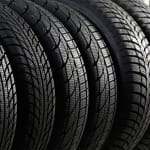
Demand for high-performance yarns for technical applications is increasing, with tire manufacturing as one of the key drivers. In this context, Barmag, a subsidiary of the Swiss Oerlikon Group, is expanding its installed base of high-modulus low-shrinkage (HMLS) polyester yarn systems in China. Over the coming three months, the company will commission three HMLS yarn systems with a total of 30 stations at established technical yarn producers in the country. This capacity expansion reflects both the growing importance of polyester-based reinforcement materials in tires and the rising production volumes of local automotive brands in China.
New HMLS systems for Chinese technical yarn producers
According to the company, the three HMLS yarn systems are being installed at renowned manufacturers of technical yarns in China. Particularly notable is the fact that two of these HMLS producers had previously sourced their equipment from competing suppliers. The change of supplier is attributed to process-related aspects of the technology.
Sales Director Oliver Lemke, who supports customers in the technical yarn segment together with colleagues on site, explains the basis for this decision from the customers' perspective: "They were convinced by our process technology, which guarantees the economic production of HMLS yarns of the very best quality." The statement underscores that, in addition to yarn performance characteristics, process efficiency and reproducibility are decisive criteria for investment in new spinning systems.
The performance profile of HMLS yarn is primarily defined during the spinning and drawing process. High production speeds contribute to a stable arrangement of the molecules within the polyester polymer that forms the filament. This internal molecular chain structure is a key parameter determining the dimensional stability of the final yarn, which in turn is critical for its function as a reinforcement material in tire carcasses.
Material properties of HMLS yarn for tire reinforcement
HMLS polyester yarns are designed to combine high modulus, low shrinkage and good fatigue resistance. In tire applications, these yarns must withstand mechanical loads, cyclic deformation and temperature fluctuations over long service lifetimes while maintaining their geometry. The described production process aims at achieving a molecular structure that supports these requirements.
In practice, HMLS yarn is characterized as extremely tear-resistant, yet at the same time highly elastic, temperature-stable and dimensionally stable. These properties enable its use as a reinforcement material in the tire carcass, where it replaces or complements traditional steel cords in specific segments. The balance of stiffness, elasticity and stability under operating conditions allows tire manufacturers to design lighter constructions without compromising durability.

Reinforced with dimensionally stable HMLS yarn, tires remain dimensionally stable even under load and temperature.
Shift toward lighter tires and new carcass concepts
Industry expectations point to a further increase in demand for HMLS yarns over the coming years. One central factor is the trend toward lighter tires, which is driven by vehicle efficiency considerations and associated regulatory and market requirements. Historically, high-modulus polyester yarns of the HMLS type were used predominantly in high-speed tires, where high stability and resistance to deformation at elevated speeds and temperatures are required.
Today, the property profile of HMLS yarns also enables new carcass designs in other vehicle segments. According to the information provided, the use of HMLS allows the carcass of small van tires to be converted from steel cord to polyester. This shift can contribute to weight reduction in the tire structure while maintaining the necessary load-bearing capacity and stability. For the plastics and technical textiles industries, this development illustrates how targeted control of polymer structure and processing conditions can open up substitution potential in applications that have traditionally been dominated by metallic reinforcements.
Chinese automotive growth drives HMLS capacity expansion
Beyond technical factors, macroeconomic developments play a significant role in the expansion of HMLS capacity. The number of vehicle registrations is rising steadily worldwide, with China as one of the central growth markets. The production of local car brands in China has increased rapidly in recent years, which directly impacts demand for tires and their input materials.
The commissioning of new HMLS yarn systems in China is therefore closely linked to the domestic tire and automotive industry's growth trajectory. By increasing local capacity for high-performance polyester tire cord, Chinese technical yarn producers are positioning themselves to supply both domestic and international tire manufacturers. For equipment suppliers such as Barmag, this environment creates opportunities for further deployment of specialized spinning technologies tailored to technical yarn applications, particularly in high-growth regions focused on automotive production.



